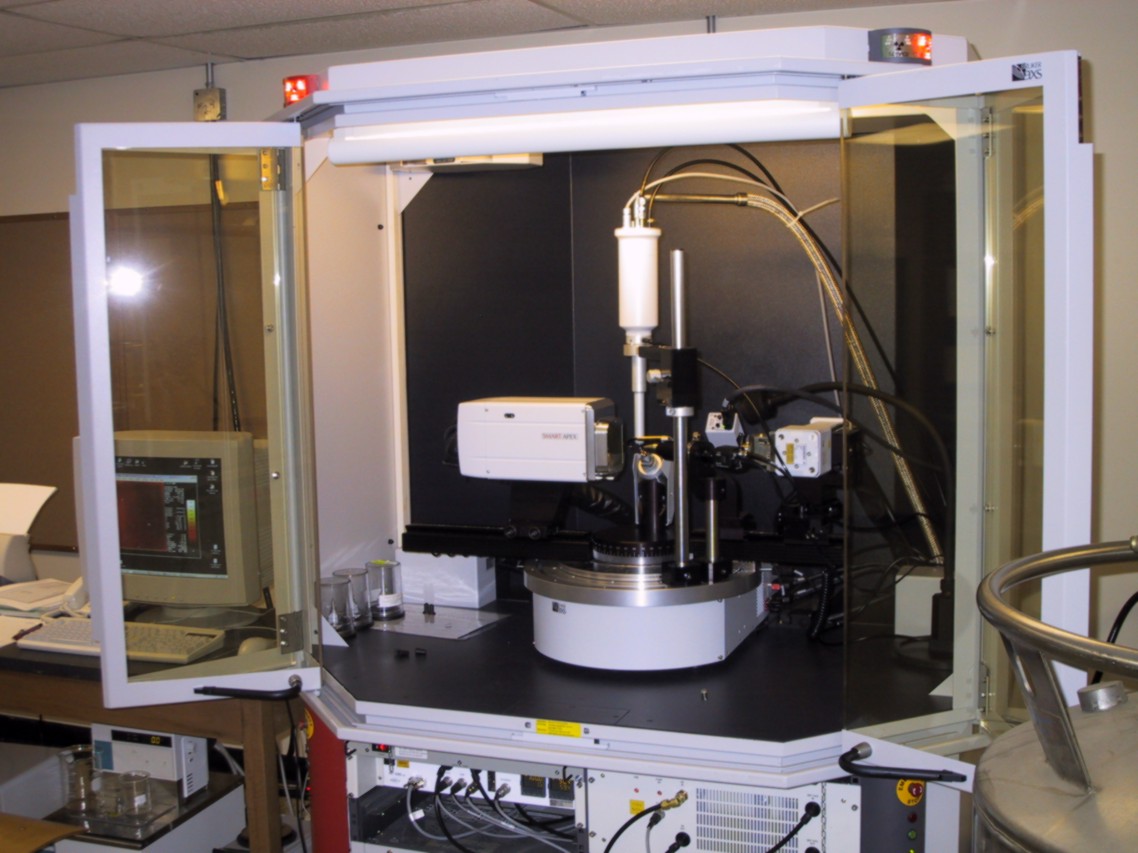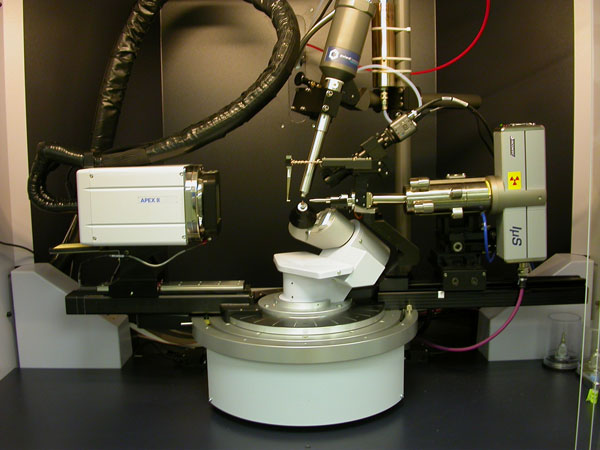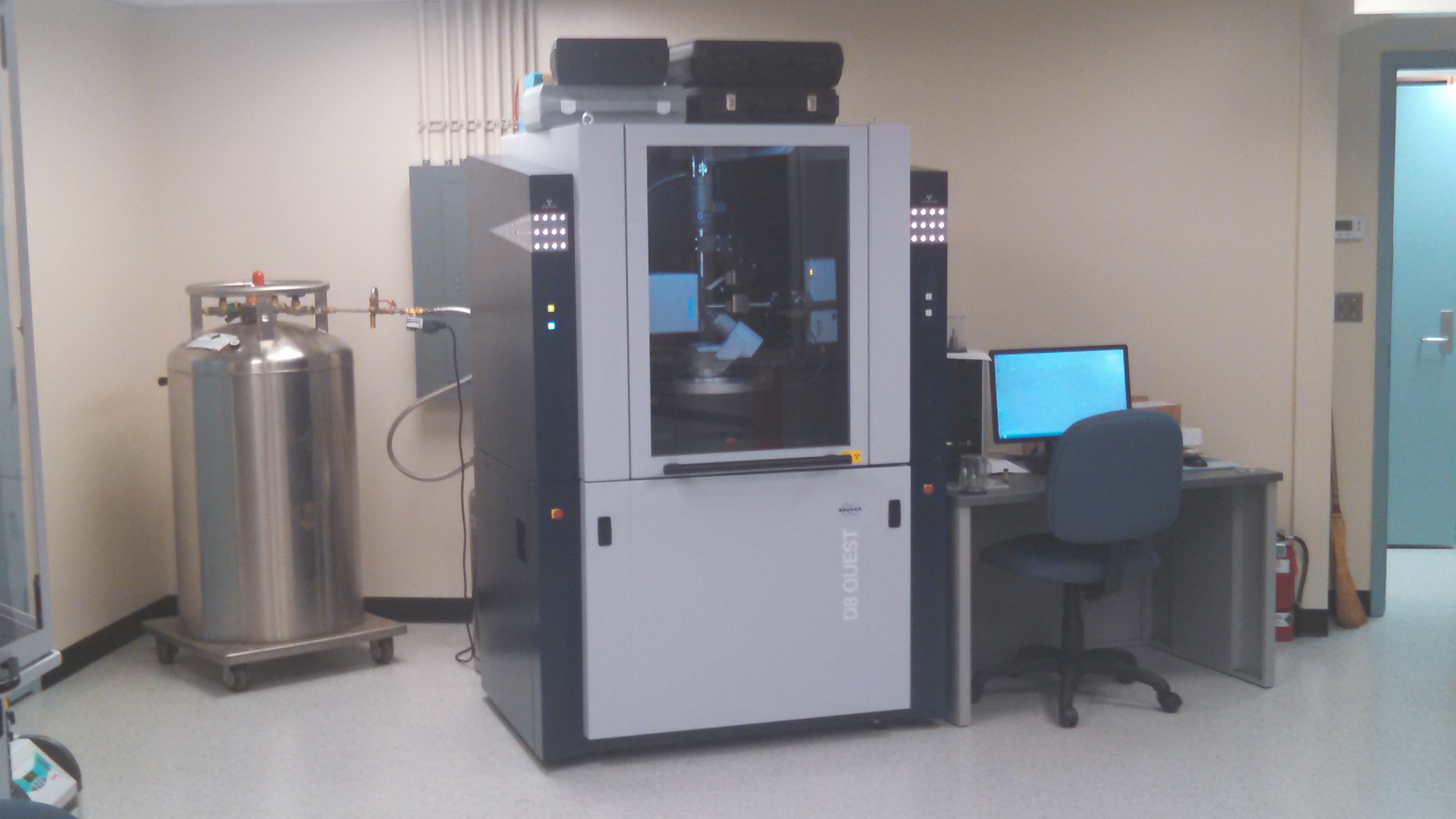Single Crystal X-Ray Diffractometers
The X-Ray Diffraction Lab at Youngstown State hosts three single crystal diffractometers. All systems are equipped with variable temperature devices from Oxford Cryosystems allowing data collection in the range of 90 to 400 K (500 K for the Quest system):
Bruker AXS ApexII:
The Bruker ApexII instrument was installed in 2000 as a Smart Apex system. It has since been extensively upgraded, including installation of an ApexII detector in 2013. It is equipped with an Oxford Cryostream series 700 variable temperature unit for routine data collection at temperatures between 90 and 400 K. It operates with a fine focus sealed tube Mo X-ray source and is equipped with capillary focusing optics. The ApexII area detector features a 62 mm 4K chip CCD detector.
Core features:
0.5 mm Mo sealed tube X-ray source with capillary optics; ApexII CCD area detector; 3-axis goniostat; variable temperature capabilities (Oxford cryosteam 700, 90-400 K).

Bruker AXS X8 Prospector:
The Prospector diffractometer, installed in 2014, features a copper microsource, advanced X-ray optics and a highly sensitive ApexII CCD area detector. Developed by Bruker AXS as an in-house protein crystallography system, it is primarily used here for collection of data from the most challenging small molecule samples from very small or weakly diffracting crystals. It is also capable of screening crystals from macromolecules, such as globular proteins, DNA and RNA, prior to sending samples for complete data collection at a synchrotron beam line. It's power XRD plugin feature allows multicrystalline X-ray data collection from very small or air sensitive samples (in capillaries or in reflective mode).
Core features:
High brightness Cu IµS Incoatec microsource with Quasar MX optics; ApexII CCD area detector; kappa 4-axis goniostat; variable temperature capabilities (Oxford cryostream 700, 80-400K).

Bruker AXS D8 Quest:
The Quest, also installed in 2014, features molybdenum microsource, advanced X-ray optics and a CMOS (Complementary Metal Oxide Sensor) detector. This new technology allows for the detector to operate continuously and shutterless leading to substantially faster data collection times. The main use of this instrument will be fore high throughput data collection of less challenging samples.
Core features:
High brightness Mo IµS Incoatec microsource; 100 cm2 photon 100 CMOS (Complementary Metal Oxide Sensor) detector; Helios optics; kappa 4-axis goniostat; variable temperature capabilities (Oxford cryosteam 700 plus, 80-500K).

Questions or Comments?
